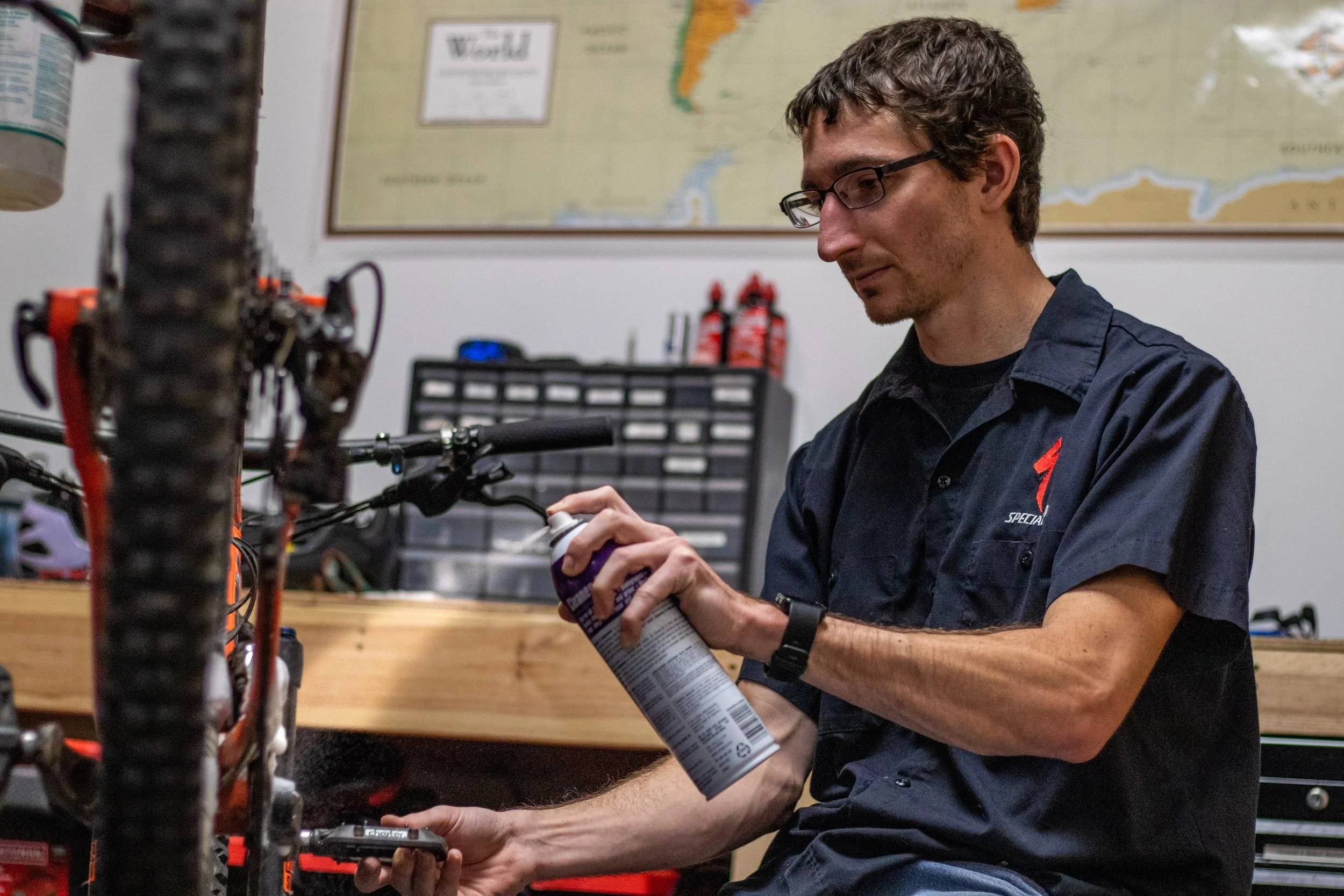Bike Care & TLC Basics
“I’m finally the proud owner of a bicycle! What should I be doing on a regular basis?”
Bicycles are relatively simple & inexpensive to maintain, so don’t worry, it’s not too complicated.
Follow these tips so you can worry less about future repair costs & do more riding!
1. Check Your Tire Pressure Before Every Ride
Just like your car, bike tires naturally lose air over time — and that can be sneaky!
Low tire pressure increases rolling resistance, making pedaling feel like you’re fighting quicksand. Many newer riders don’t even notice it, but every extra push wastes energy and slows you down.
Low pressure isn’t just frustrating — it can also be unsafe. Tires with too little air are more likely to pinch flat or handle poorly around corners.
What to do:
Keep a floor pump with a gauge at home.
Your tire’s recommended PSI is stamped on the sidewall.
Quickly check and top off your tires before every ride so you can pedal efficiently and ride safely.
Do You Have A Pump At Home?
It’s always recommended to be able to quickly test your tire pressure & top off your air before every ride!
2. Lubricate Your Chain Once a Month
Your bike’s drivetrain — the chain and gears — is metal on metal, which naturally wears over time. That’s where chain lubricant comes in: it keeps everything moving smoothly, reduces wear, and makes your ride quieter.
Why it matters:
A clean, lubed chain lasts longer and saves you repair time.
It only takes 2 minutes!
How to do it:
Grab a damp cloth and lean your bike against a wall.
Wrap the cloth around the lower chain with your left hand.
Turn the pedals backward 5–10 times, letting the cloth absorb grime.
Apply a dropper chain lubricant like Finish Line while turning the pedals backward 5–10 times again.
Tips:
Casual riders: once a month or after riding in the rain.
Serious cyclists: every 300–400 miles.
3. Get Annual Tune-Ups
Casual rider? Perfect! The easiest way to keep your bike safe, smooth, and long-lasting is a once-a-year check-up at your local bike shop.
A standard tune-up is often all it takes to get most bikes ready for the spring and summer, especially if it’s been maintained well throughout the year.
An annual safety inspection gives you peace of mind, helps prevent bigger repairs, and ensures your bike enjoys its longest, best life. Prevention is always better than repair!
Prevention Is Key
When it comes to bikes, it’s best to remember the old adage, ‘An ounce of prevention is worth a pound of cure’!
Moderate Riders: Every 1,500 Miles
If you ride around 40 miles per week — a casual ride, a couple of commutes, and a grocery trip — you’ll hit 1,500 miles in under a year. At this point, a tune-up is essential to keep your bike running smoothly for years.
Why it matters:
Chains stretch over time and should be replaced every 1,500–1,800 miles to prevent damage to your cassette and chainrings.
Brake pads wear, cables stretch, and spoke tension changes after this mileage
Skipping maintenance can turn small issues into costly repairs, sometimes enough to “total” the bike, similar to a car.
Follow this guide, and that won’t happen on our watch!
Bonus Rule: Advanced Tune-Up Every 5–10 Years
After 5–10 years of riding, even a well-maintained bike may need a higher-level tune-up.
Basic tune-ups handle gears, brakes, rims, and cleaning.
Advanced tune-ups tackle dried-out bearings, full drivetrain degreasing, and complete re-lubrication, keeping your bike rolling like new.



